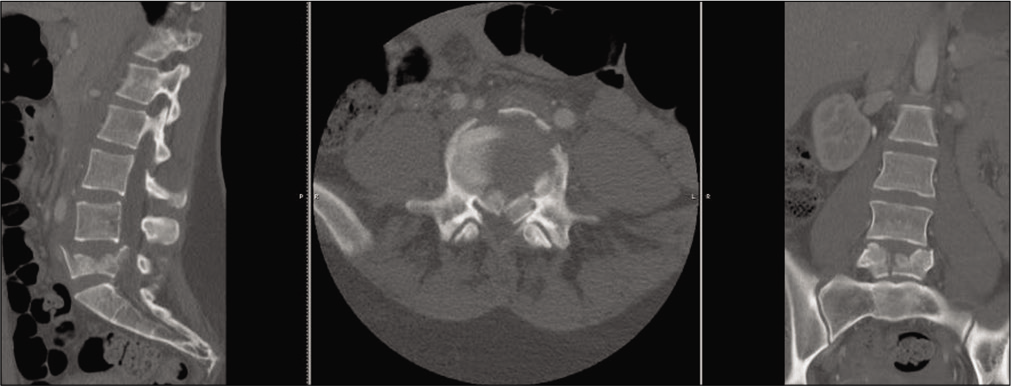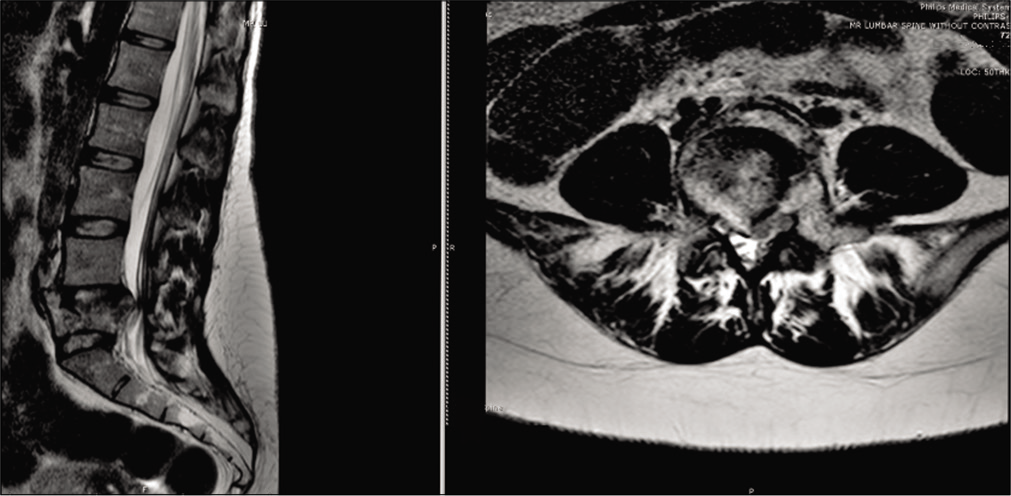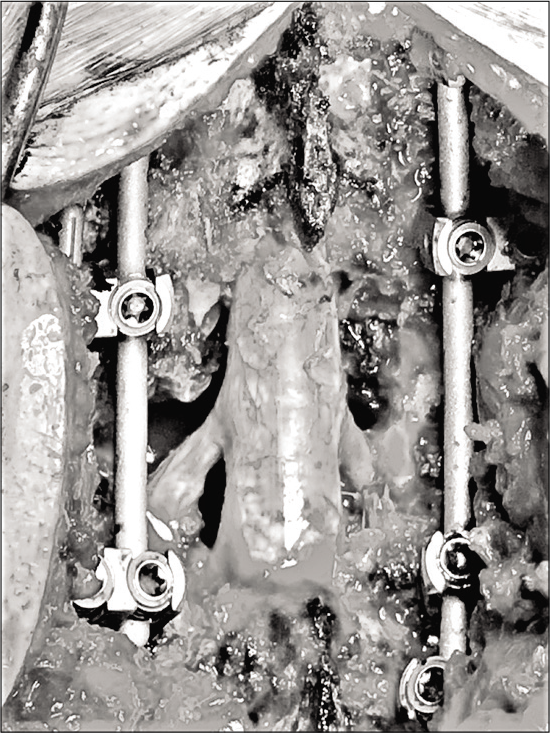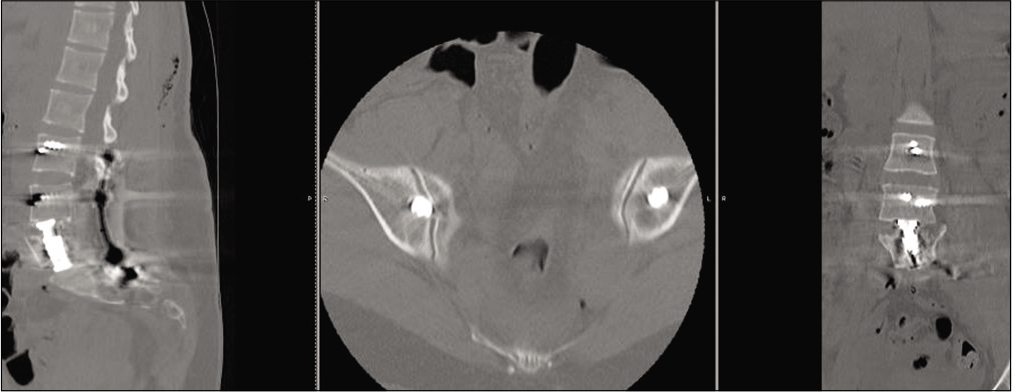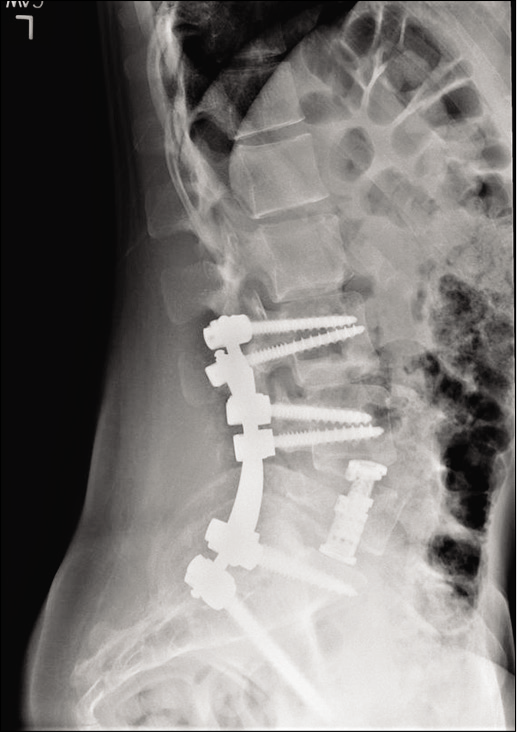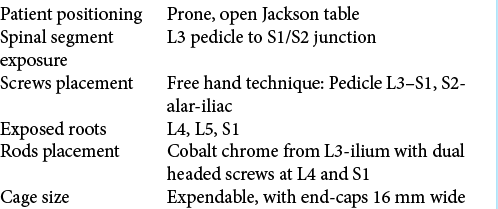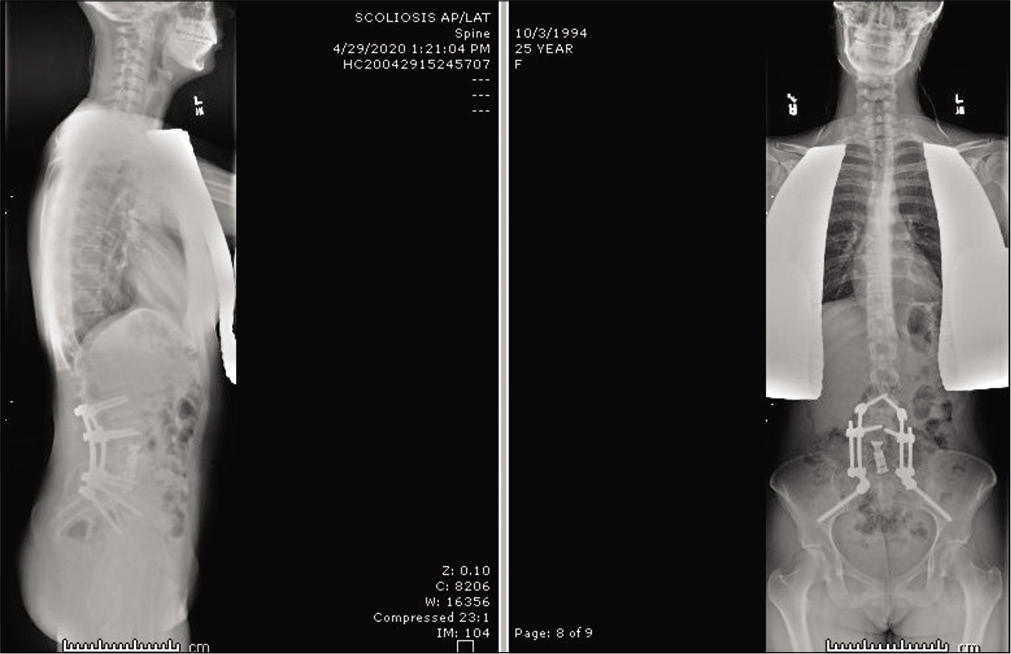- Medical Student, St. George’s University, School of Medicine, St. Gerorge’s, West Indies, Grenada,
- Department of Neurosurgery, SUNY Upstate Medical University, Syracuse, New York, United States.
Correspondence Address:
Michael Galgano
Department of Neurosurgery, SUNY Upstate Medical University, Syracuse, New York, United States.
DOI:10.25259/SNI_473_2020
Copyright: © 2020 Surgical Neurology International This is an open-access article distributed under the terms of the Creative Commons Attribution-Non Commercial-Share Alike 4.0 License, which allows others to remix, tweak, and build upon the work non-commercially, as long as the author is credited and the new creations are licensed under the identical terms.How to cite this article: Lukasz Bogdan1, Michael Galgano2. Technical nuances of a posterior-only L5 vertebrectomy with anterior column reconstruction. 08-Oct-2020;11:325
How to cite this URL: Lukasz Bogdan1, Michael Galgano2. Technical nuances of a posterior-only L5 vertebrectomy with anterior column reconstruction. 08-Oct-2020;11:325. Available from: https://surgicalneurologyint.com/surgicalint-articles/10312/
Abstract
Background: Burst fractures involving the L5 vertebra are quite rare . They can be managed with anterior, posterior, or combined 360 approaches. Here, we report a 25-year-old female who presented with a traumatic cauda equina syndrome attributed to an L5 burst fracture following a motor vehicle accident, and who did well after a posterior-only decompression/fusion.
Case Description: A 25-year-old female presented with a traumatic cauda equina syndrome attributed to an L5 burst fracture following a motor vehicle accident. She was treated with a posterior-only vertebrectomy and followed for 5 postoperative months. During this time, she experienced complete resolution of her preoperative neurological deficit and demonstrated radiographically confirmed spinal stability.
Conclusion: One of the major pros for the all-posterior L5 corpectomy as in this case, was that the patient underwent a successful single-stage, single-position operation. However, the posterior-only L5 corpectomy approach is technically demanding, and only allows for the placement of a lower profile interbody cage.
Keywords: Anterior L5 corpectomy, L5 burst fracture, L5 pedicle subtraction osteotomy, L5 spondylectomy, Posterior-only L5 corpectomy, Sacral slope
INTRODUCTION
Burst fractures of L5 represent approximately 1.2% of overall spine fractures, and 2.2% of thoracolumbar fractures.[
CASE DESCRIPTION
A 25-year-old female underwent a posterior-only L5 vertebrectomy accompanied by a pedicle screw instrumented fusion from L3-S1 [
DISCUSSION
Posterior L5 vertebrectomies are technically demanding operations. To safely deploy an expandable cage into the ventral compartment, it is critical to extensively skeletonize the L4, L5, and S1 nerve roots, thus effectively exposing the thecal sac. This decompresses the neural elements, while providing a safer setting for cage deployment. The most technically demanding portion of this operation is removing the inferior-most part of the L5 vertebral body and working within the axilla of the L5 nerve root. Once the endplates of L5 and S1 are prepared for cage insertion, one must achieve an “anatomic” fit between the end caps of the cage, and the end plates of the L5 and S1 vertebral bodies. Once optimal sagittal and coronal alignment have been achieved following cage expansion, the posterior portion of pedicle/screw the fusion may be completed.
CONCLUSION
The posterior-only L5 corpectomy approach to burst fractures is technically demanding. Its advantages include: a single-position, single-stage operation with limited morbidity (e.g., extra-spinal complications). However, when performing these procedures utilizing anterior cage reconstruction, the lateral vertebral body wall should be left in situ place to provide more intervertebral osseous surface area for fusion [
Declaration of patient consent
The authors certify that they have obtained all appropriate patient consent.
Financial support and sponsorship
Nil.
Conflicts of interest
There are no conflicts of interest.
References
1. Elnady B, Shawky A, Abdelrahman H, Elmorshidy E, ElMeshtawy M, Said GZ. Posterior only approach for fifth lumbar corpectomy: Indications and technical notes. Int Orthop. 2017. 41: 2535-41
2. Hunt T, Shen FH, Arlet V. Expandable cage placement via a posterolateral approach in lumbar spine reconstructions. Technical note. J Neurosurg Spine. 2006. 5: 271-4
3. Kocis J, Wendsche P, Visna P. Complete burst fracture of the fifth lumbar vertebra treated by posterior surgery using expandable cage. Acta Neurochir (Wien). 2008. 150: 1301-5
4. Li HJ, Zhang WB, Fang CY, Mo TT. Case-control study on therapeutic effects between posterior corpectomy, decompression and reconstruction and combined anterior-posterior surgery for the treatment of severe thoracolumbar fractures with incomplete paraplegia. Zhongguo Gu Shang. 2014. 27: 928-32
5. Ramieri A, Domenicucci M, Cellocco P, Raco A, Costanzo G. Neurological L5 burst fracture: Posterior decompression and lordotic fixation as treatment of choice. Eur Spine J. 2012. 21: S119-22
6. Tan T, Donohoe TJ, Huang MS, Rutges J, Marion T, Mathew J. Does combined anterior-posterior approach improve outcomes compared with posterioronly approach in traumatic thoracolumbar burst fractures?: A systematic review. Asian Spine J. 2020. 14: 388-98
7. Vazan M, Ryang YM, Gerhardt J, Zibold F, Janssen I, Ringel F. L5 corpectomy-the lumbosacral segmental geometry and clinical outcome-a consecutive series of 14 patients and review of the literature. Acta Neurochir (Wien). 2017. 159: 1147-52


